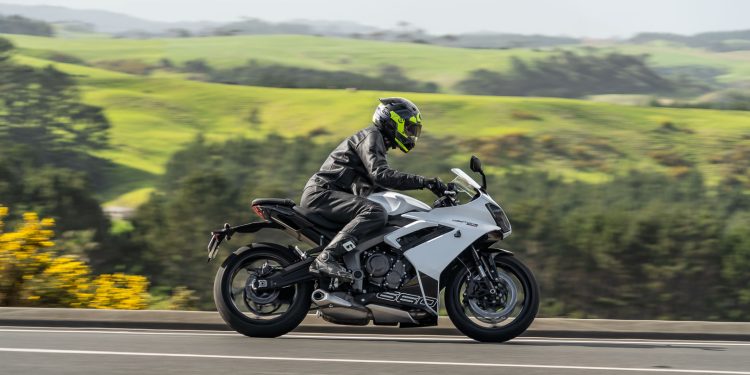2024 Triumph Daytona 660 (LAMS) review
Words: Peter Louisson | Photos: Isaac Western
Triumph returns with a pair of Daytona middleweight models, one learner legal, one full power. We ride the LAMS machine.
It’s good to see the Daytona name making a triumphant return, this new one a 660 where the former was a 675cc model. Both run three-cylinder engines, sport flash styling and have clip-on handlebars.
But otherwise, they’re quite different. The former Triumph Daytona 675 was akin to a 916 in its riding position and comfort, or lack thereof.
It was a rack of a thing that went like stink and handled well but was about as comfortable as a concrete lounger.
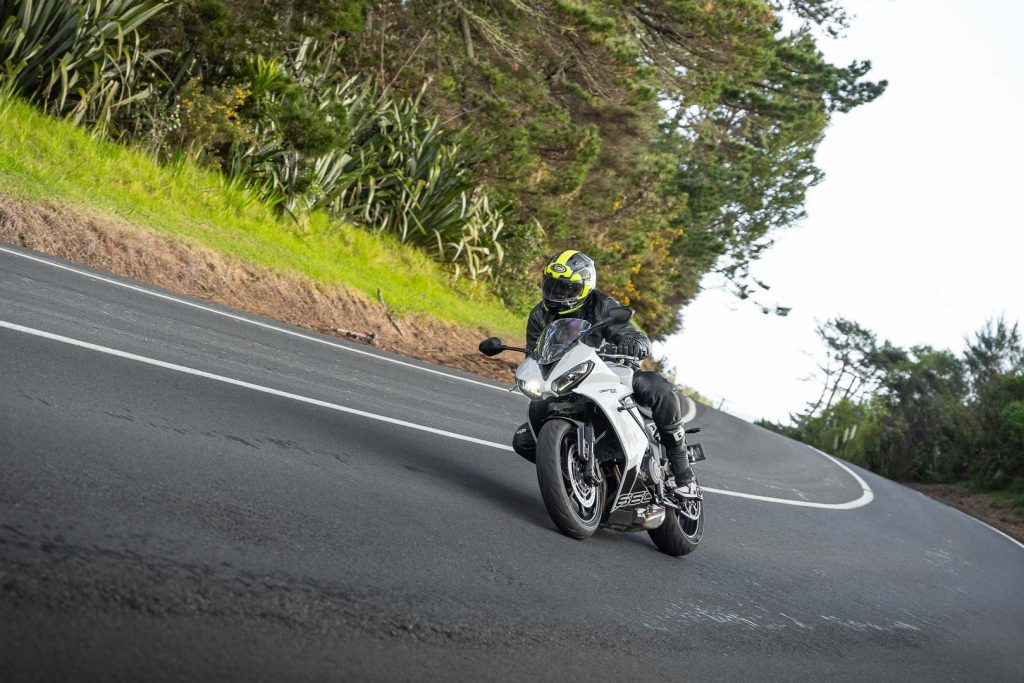
Daytona take two is almost the polar opposite, despite a riding position that looks superficially similar. The new model is a road bike where the original was track oriented.
There’s actual compliance in the suspension when you traverse bumps, and the clip-on bars aren’t as uncompromising. Cut outs in the tank for your knees help to relieve the weight on your wrists during town running.
The other gratifying aspect of the new Daytona, which looks striking in white and black, is that there are both learner legal and full power options.
What is it?
A proper soft-core sports bike in essence. The full-noise model generates 70kW/69Nm, 80 per cent of the latter available from 3000rpm. As is the way, the LAMS model has 40 per cent less power (42kW) but only 10 per cent less twist, down from 69 to 62Nm.
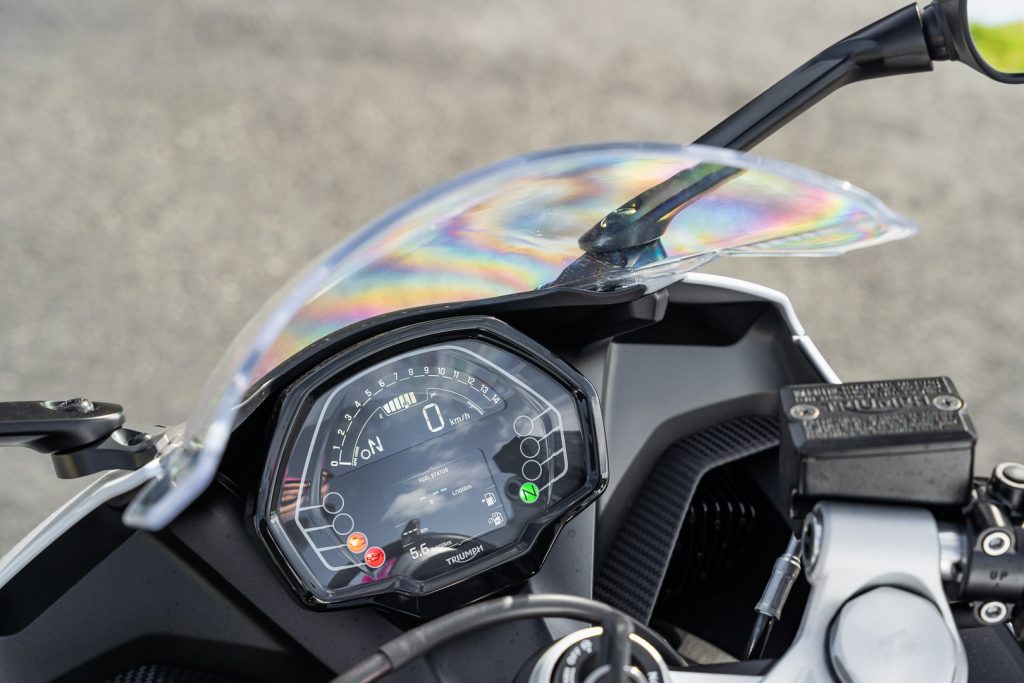
In everyday riding situations, the two feel broadly similar. It’s only at the top end where the full-fat model will show the LAMS version the way. The lesser Daytona costs $15,990, the full power Daytona 660 $16,690.
Daytona 660 is equipped with three riding modes (Sport, Road and Rain). These optimise throttle response and traction control settings for various conditions.
Triumph uses good quality components, the Daytona running Showa USD big piston 41mm forks, unadjustable, while at the rear is a preload-adjustable Showa monoshock.
Stoppers are radial-mount four-piston brakes gripping 310mm discs. Braided brake lines are a nice touch. Where the rubber meets the road are Michelin’s Power 6 tyres.
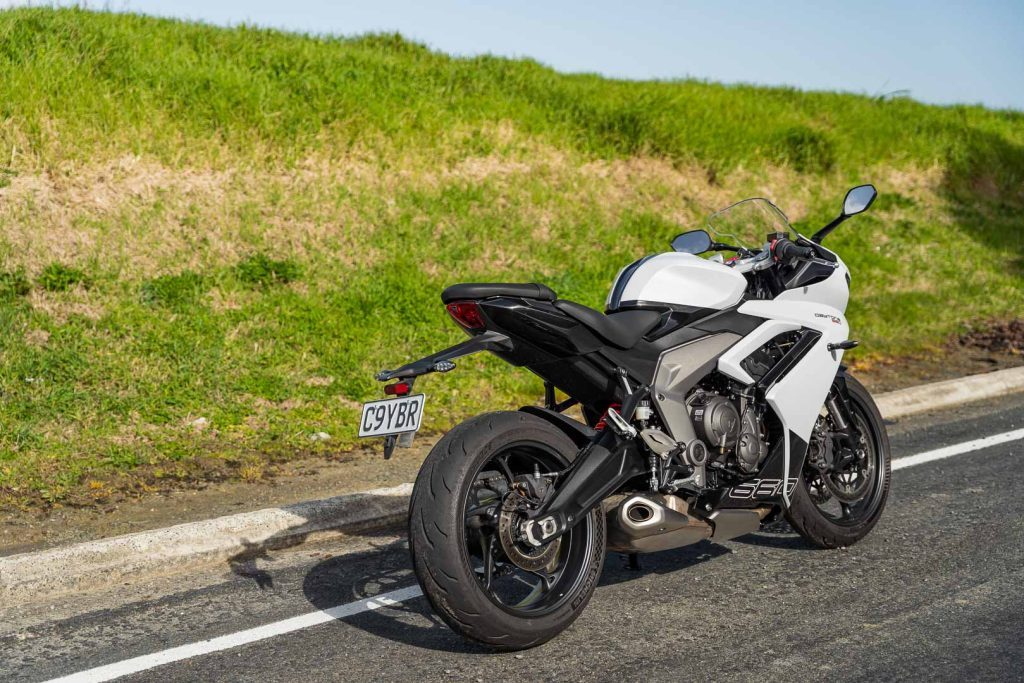
Other standard items include a slip and assist clutch, cast aluminium wheels, switchable TC, and a colour TFT screen that is compatible with an app enabling nav, phone and music functionality. An up/down quickshifter is a cost option.
We found the standard seat height of 810mm just right but lesser individuals (height obviously) can option a 785mm pew. There are plenty of accessories available too, the QS as mentioned, along with heated grips, a USB socket and tyre pressure monitoring.
Daytona is available in white, red and grey hues, all featuring a ‘660’ race-inspired graphic.
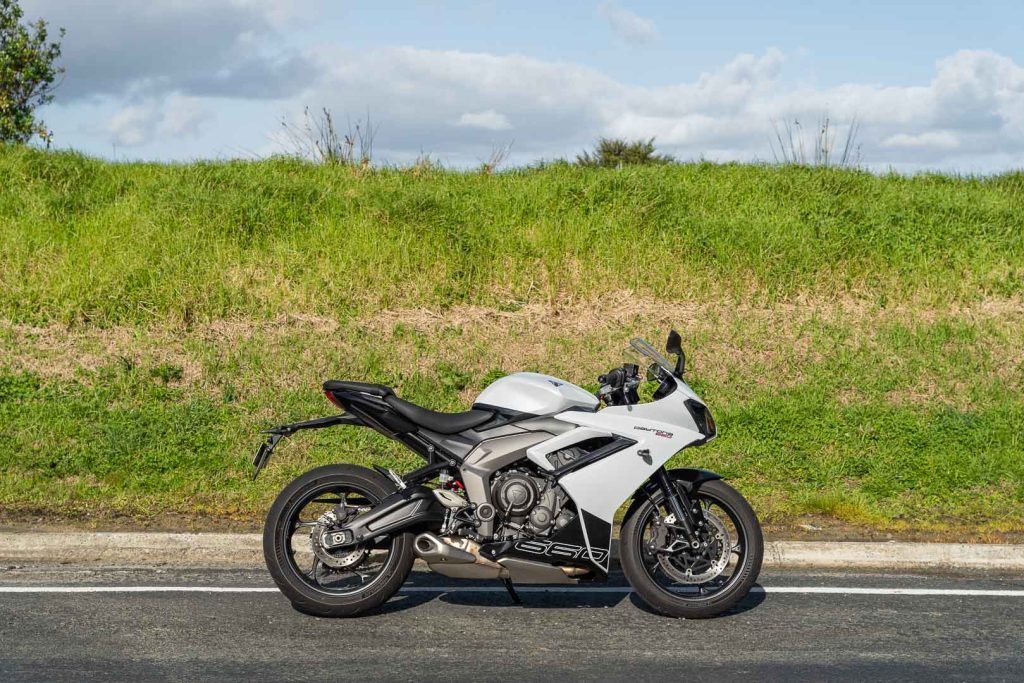
What’s it like then?
The styling really appeals, reminding of the latest Speed Triple. It has twin LED headlights, a central air intake and a small screen giving it an athletic stance. Big tyres look meaty.
The stubby exhaust sounds good, though is not that loud because of sound regs.
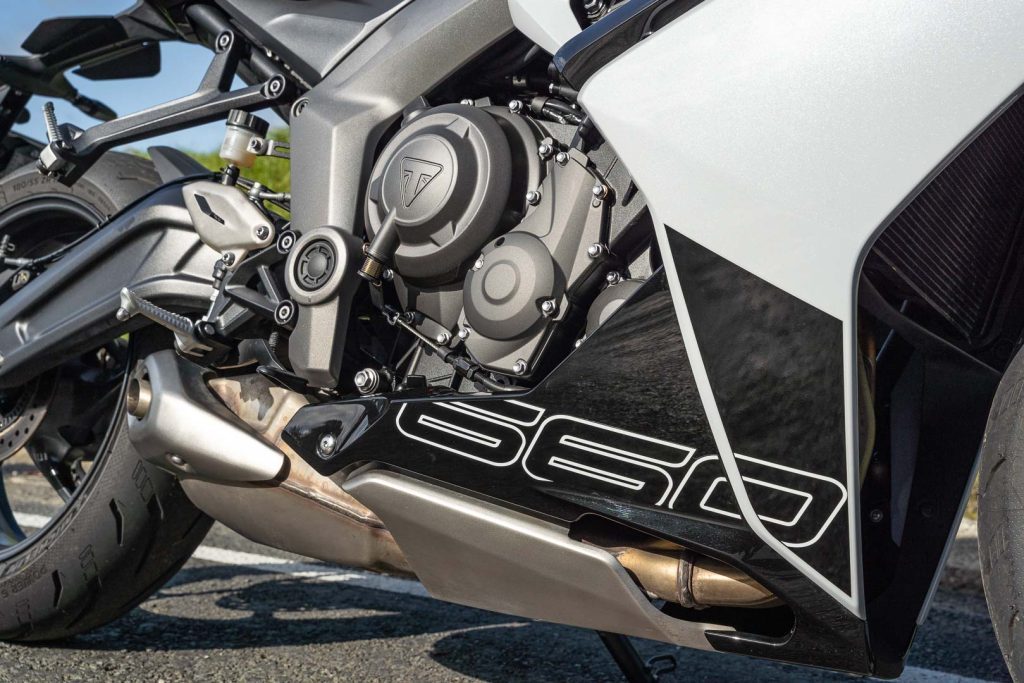
I was expecting pain within minutes but it took rather longer to arrive. Or perhaps I just ignored it because this is just so much fun to ride, even without the optional quickshifter.
The gearbox and clutch are smooth, lightweight, the brakes effective with reassuring bite. A 37m stoppie is stunning for a sports-oriented machine.
Mirrors are sited a fair way forward, mounted to the fairing so it’s possible to miss vehicles in the blind spot. The left is okay, the right shows too much arm. About the only other aspect that seemed odd was the indicator action, which felt spongy.
Modern sports bikes these days are a bit different from what they used to be. Where they were invariably litre machines and generally had four cylinders, or three at least, occasionally two, nowadays bikes with sporting pretensions are just as likely to have two cylinders in parallel.
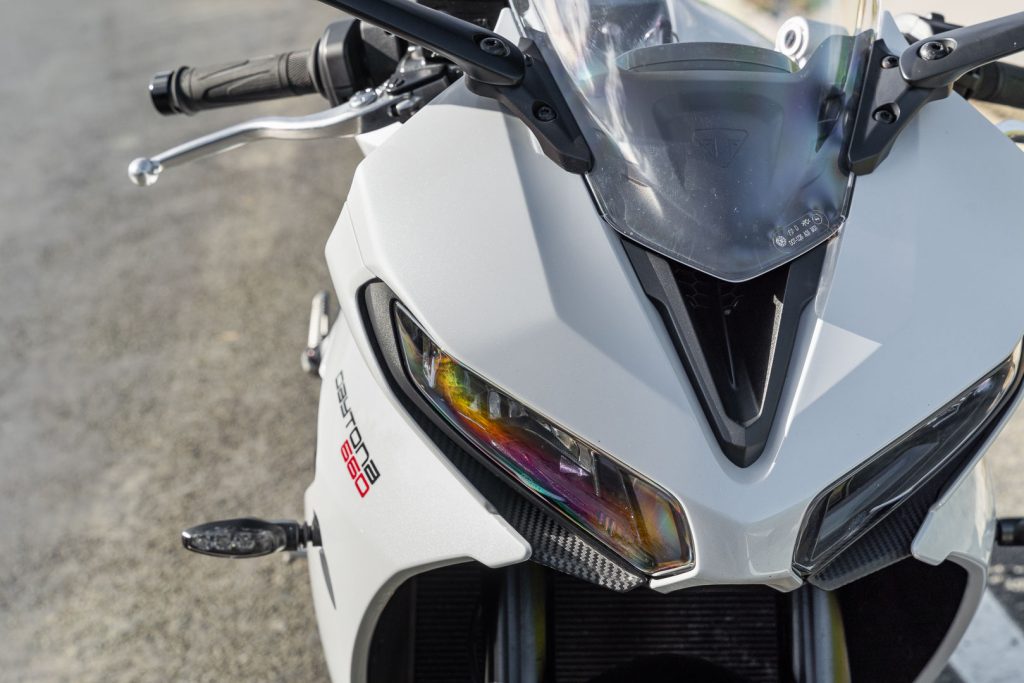
Examples include the R7, Suzuki’s GSX-8R, MT-07 HO, and Hornet 750. So they’re not quite such hotshots but nor do they cost the earth.
The Daytona is a bit unusual in having three cylinders. Triples are fun, because they do low-end drive and a wild top end equally well, which pretty much describes the unrestricted Daytona.
The full-fat model can go like hell if you rev it out, though not quite to excessive speeds like the litre-plus four-pot sports bikes. However, it’s only half the price.
LAMS as good?
What about the LAMS bike, you ask? If you’re using revs up to about three-quarters throttle it feels just as quick, essentially. In everyday use you’d likely not notice the difference.
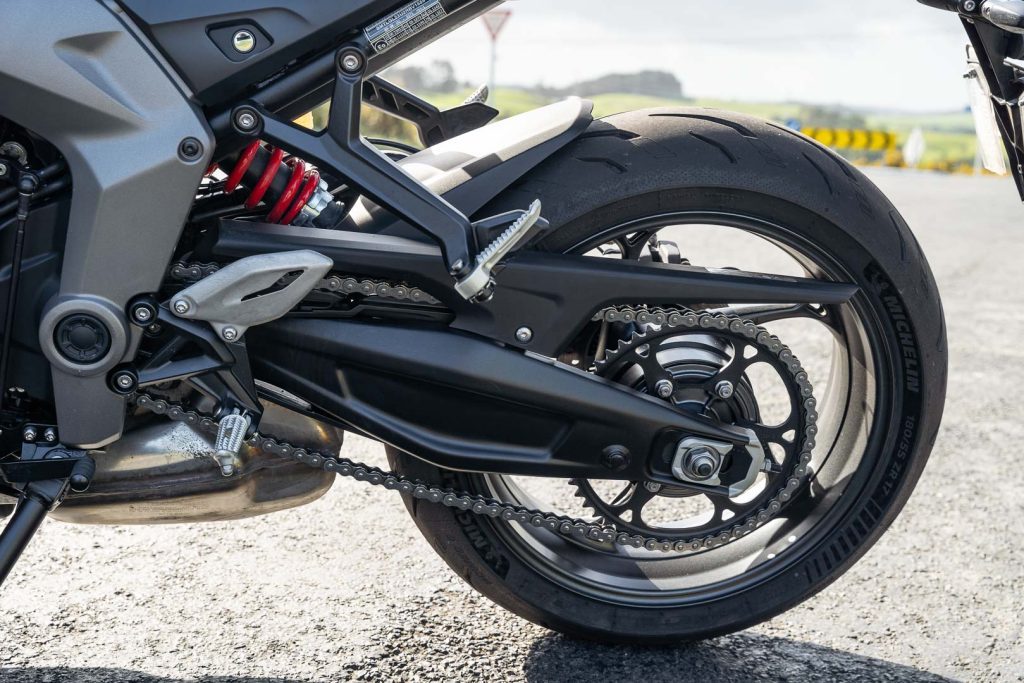
It’s smooth too, vibes essentially a non-issue. We like how it pulls so cleanly from 2000rpm and eases about town in top gear with not a care in the world. At which point fuel use is in the threes.
Out of town, think low high fours and low fives.
We’d probably not bother with the quickshifter as the transmission is slick enough as it is. Handling, it almost goes without saying, is superb.
Triumph are chassis maestros so it flows down the road beautifully, turning so effortlessly, holding a line, absorbing the lumps and bumps in our ropey roads without blinking.
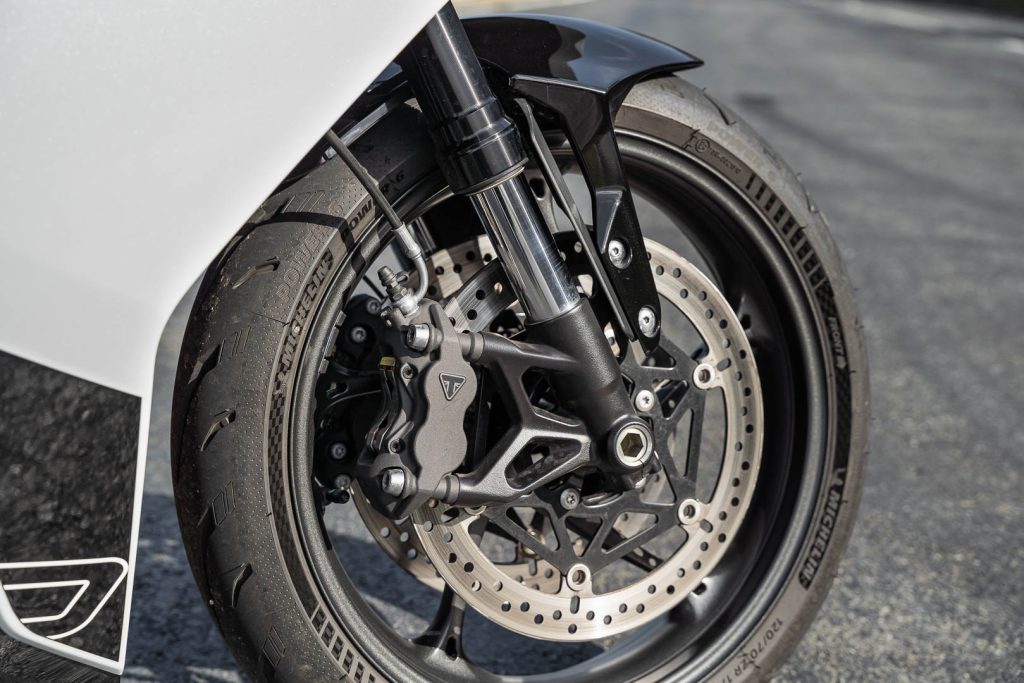
The controls are simple in use too, with a mode button that you’ll generally leave in Sport, though Road is fine as well and I guess Rain will have a place.
The TFT screen is clear, not that big but revs and speed you can take in quickly.
The former you tend not to check much because you generally hook a higher gear early, such is the generous torque of the triple.
Where bikes like the Street 400 and Triumph Scrambler 400 X will sell in a ratio of about 10:1 over this, the Daytona will certainly have a place in Triumph’s line-up for those wanting a sports bike that’s quick but not too quick, and with great handling without overlooking ride quality.
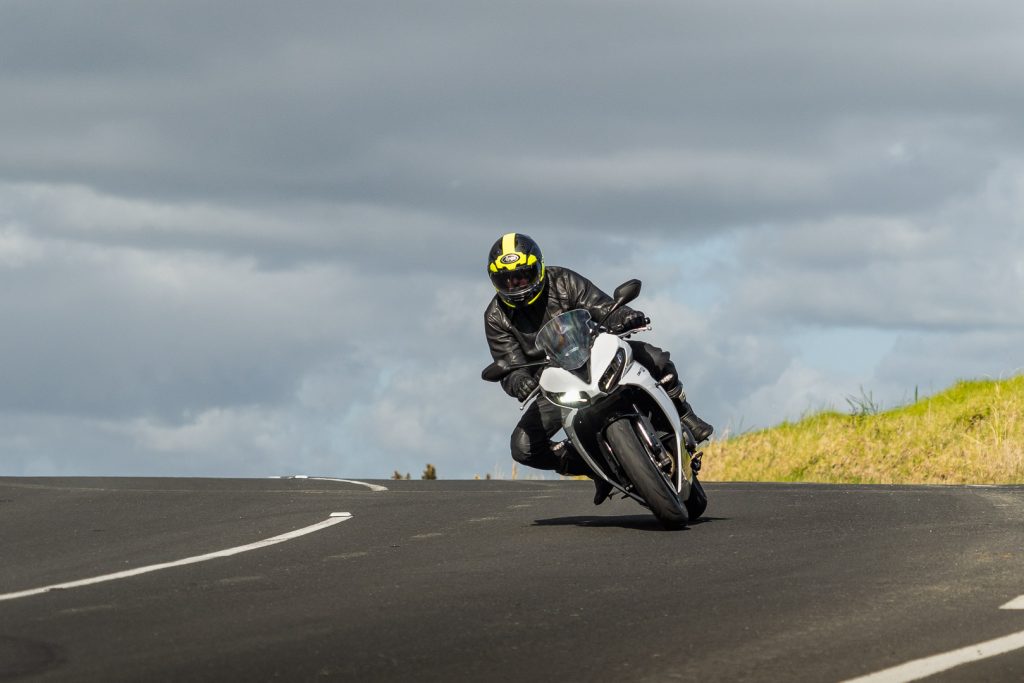
Moreover, you can have all this in a learner-legal framework. The final bonus is a two-year unlimited km warranty and service intervals of 16,000km.
| Model | Triumph Daytona 660 (LAMS) |
| Price | $15,990 |
| Format | Liquid-cooled / fuel-injected / IL3 |
| Engine | 660cc |
| Max Power | 42 kW @ 6750 rpm |
| Max Torque | 62 Nm @ 6250 rpm |
| Cylinder Head | DOHC / 12v |
| Gearbox | 6-speed |
| Drivetrain | Chain final drive |
| Front Suspension | 41mm USD forks, no adjustment |
| Rear Suspension | Monoshock, preload adjustable |
| Front Brakes | Four-piston calipers, 310mm disc |
| Rear Brakes | Single-piston calipers, 220mm disc |
| Safety Systems | ABS, TC |
| Tyre Size | F – 120/70R17 / R – 180/55R17 |
| Tyres | Michelin Scorcher 6 |
| Wheelbase | 1426mm |
| Seat Height | 810mm |
| Rake/Trail | 23.8 degrees / 82.3mm |
| Fuel Capacity | 14 L |
| Measured Weight | 201 kg |
| Weight Distribution | F – 99 kg / R – 102 kg |
This article first appeared in the November 2024 issue of NZ Autocar magazine.


